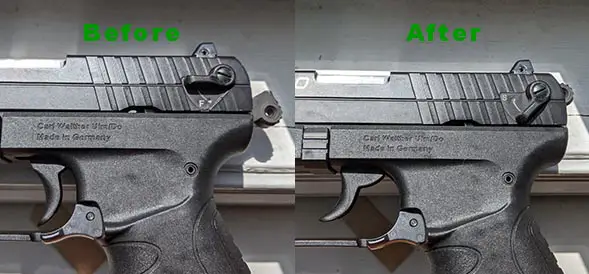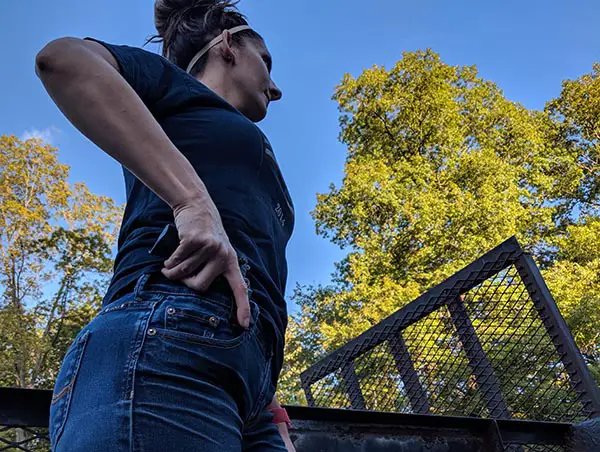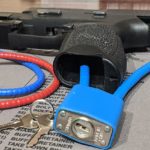Being able to successfully and safely decock a pistol is a skill every shooter should have. Regardless of which condition you choose to carry your handgun, being able to lower the hammer safely makes handling any firearm easier. Below are several options and methods to safely decock a pistol.
- KEEP THE HANDGUN POINTED IN A SAFE DIRECTION
- Enable the safety if available
- Use the decocking lever if available
- Place non-dominant hand thumb between hammer and firing pin
- Place dominant hand thumb on hammer
- Maintain pressure on hammer as you squeeze trigger
- Ride the hammer down SLOWLY as you move your thumb
Table of Contents
Why Would You Decock A Hammer?
There are a number of reasons someone might want to carry with the hammer down. First, a person may be more comfortable carrying with a round chambered when the pistol is hammer down. Another reason might be for competitive shooting. For instance, USPSA (8.1.2.2) states that double-action pistols are at the ready with the chamber loaded and hammer down.
I’ve seen people asking how to safely decock their pistol get a lot of grief, particularly in online forums. Most people say things akin to “if you don’t trust the hardware don’t carry” or “get a gun with a decocker if you want to carry in double action.”
That’s all well and good, but among other things, finding a handgun that feels good in your grip can be important and your selected model may not have a decocker.
Additionally, any mechanical device (e.g. the sear) has the potential to fail. But, I won’t argue that human error is more likely than a mechanical failure. However, if carrying with the hammer down makes someone more comfortable then that’s their choice.
What Pistols Can You Decock Safely?

Not every pistol is the same. Therefore, not every pistol can be decocked safely. Handguns with a decocking lever are made to be stored with the hammer down. Additionally, any pistol with an exposed hammer, such as a 1911 can be de-cocked. However, striker fired pistols do not have a hammer and therefore cannot be decocked safely. https://www.youtube.com/watch?v=EC6fydtKwRc
So, which models generally have a decocker? Well, that varies by model. However, in my experience, automatics with a flush or recessed hammer, like the Smith & Wesson 6906 pictured above, usually have some kind of decocking lever. These types of hammers don’t usually allow adequate surface area to de-cock manually.
Striker fired pistols will not have a hammer. You’ll notice that the striker fired pistols do not have an exposed hammer and all of the mechanics that control movement of the firing pin are internal. Therefore, striker fired pistols cannot be de-cocked. An example of a common striker fired pistol is a Glock.
Pistols with an exposed hammer can usually be decocked manually. Next we’ll cover each step in a little more detail.
Guide To Safely Decock Your Handgun
I highly recommend that before you attempt to de-cock the hammer, that you practice with an empty handgun. You’re going to make mistakes while finding out what is comfortable and works for you.
1. Keep The Firearm Pointed In A SAFE Direction
Always, Always, ALWAYS keep your pistol pointed in a safe direction. This is the first and most important rule of firearm safety, because it is the catch all safety measure. If anything else goes wrong while decocking the hammer, having the muzzle pointed in an appropriate direction ensures safety!
Additionally, exercise trigger discipline throughout this process by keeping your finger OFF THE TRIGGER, until you are completely setup to lower the hammer.
2. Enable The Safety
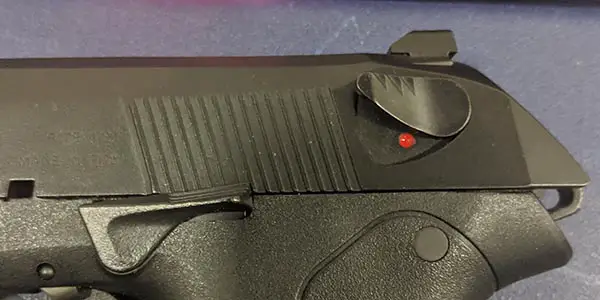
Next, enable any external safeties that are available. To safely decock the hammer on a handgun you should use every safety measure available to you.
Some pistols will have internal or trigger safeties. However, for the purposes of decocking the hammer I am referring exclusively to external safeties. Be sure that the safety does not interfere with the operation of the hammer (see 1911 section of video below).
Ensure to read the firearm owners manual for details and instructions about enabling the external safety.
3. Use The Decocking Lever If Available

A decocker or decocking lever serves the explicit function of lowering the hammer without discharging a round. In the above section, I show the decocking lever for the S&W 6906 located on the slide.
Sometimes the decocker will be in another location on the handgun. For instance, on the Sig P226, there is a separate lever near the front of the grip. You’ll need to consult your owners manual for information on your handgun model.
4. Insert Non-Shooting Hand Thumb In Front Of Hammer
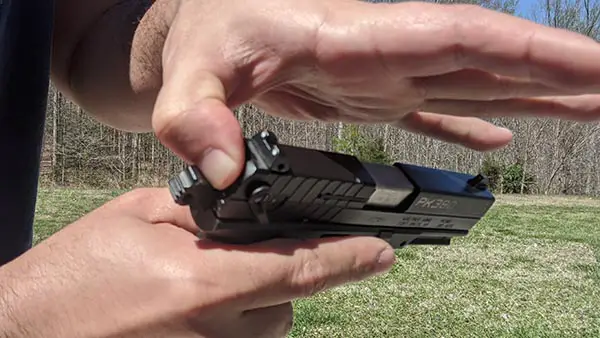
Next, place your non-shooting thumb in front of the hammer blocking the path to strike the firing pin. This is your tertiary method of preventing a negligent discharge.
Depending on the size of your handgun, in comparison to your hand, you may need to adjust your grip on the pistol. Find what is comfortable using an empty handgun with a clear chamber.
I personally prefer to wedge my thumb deep down and place my thumbnail against the hammer. There are two reasons I use this method. First, a loosely placed thumb is likely to result in the pinching of your skin between the slide and hammer. Additionally, if the thumb is haphazardly placed, the force of the hammer could move the thumb and result in a negligent discharge.
5. Place Shooting Hand Thumb On Hammer
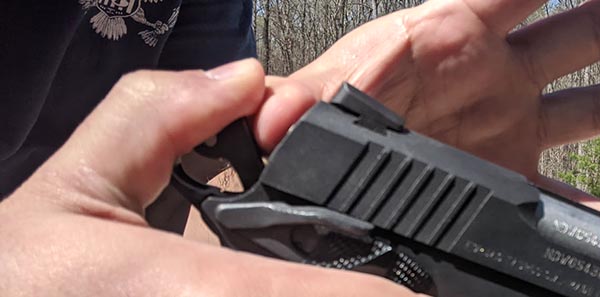
After placing your off-hand thumb in front of the hammer, place your shooting hand thumb on top of the hammer. This is your last line of defense to prevent the hammer from falling unintentionally.
Because I have hitchhikers thumb, I use the joint at the first digit of my thumb to maintain control of the hammer. Each shooter will be different, and you should practice with an unloaded handgun to know what works best for you.
6. Maintain Pressure On Hammer, Gently Squeeze Trigger
Now that we have the proper grip on the pistol, and all digits are in place, it’s time to gently squeeze the trigger. I recommend a slow controlled squeeze while maintaining pressure with your shooting thumb on the hammer.
The purpose of the thumb on the hammer is to control the speed of the hammers descent. There’s no need to stop the hammer completely but rather hinder it’s movement.
7. Ride The Hammer Down Slowly
Once the hammer has made contact with the off-hand thumb, slowly move it out of the way. Maintain control of the hammer with your shooting thumb and “ride” the hammer down to finish safely decocking your handgun.
The above video (coming soon) shows the process in detail. Afterwards, disengage the safety, holster your handgun, and be on your way.
Pinch Method: Decocking The Hammer
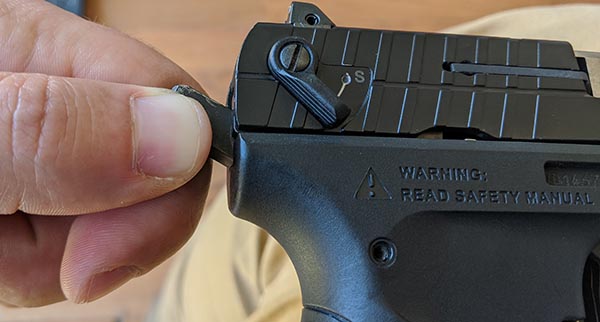
An alternative method for decocking a handgun, depicted above, involves pinching the hammer with the non-dominant hand to decock your pistol. However, I do not practice nor recommend this method.
If you are like me, sometimes your hands can become sweaty from shooting, or you may have gun lubricant on your fingers. In either scenario, you have very little purchase on the hammer and decocking the hammer can be dangerous if your grip fails.
Unlike the method previously described, your rely exclusively on your non-dominant hand to prevent a negligent discharge. Excluding any mechanical safeties, a single point of failure is all that stands between you and discharging a round.
However, using the above method you have both your shooting and non-shooting hand involved in the process which decreases the odds of an accidental discharge.
Additionally, accessories like beaver tail grips can make it difficult to grasp the hammer and still allow for free movement as the hammer is lowered.
Parting Shots
Hopefully, this guide to decocking a handgun has provided insight into the safest method and problems with the alternate. If you have any information you’d care to provide the community, leave a comment below. Thanks for taking the time to read up, and providing your insights!
